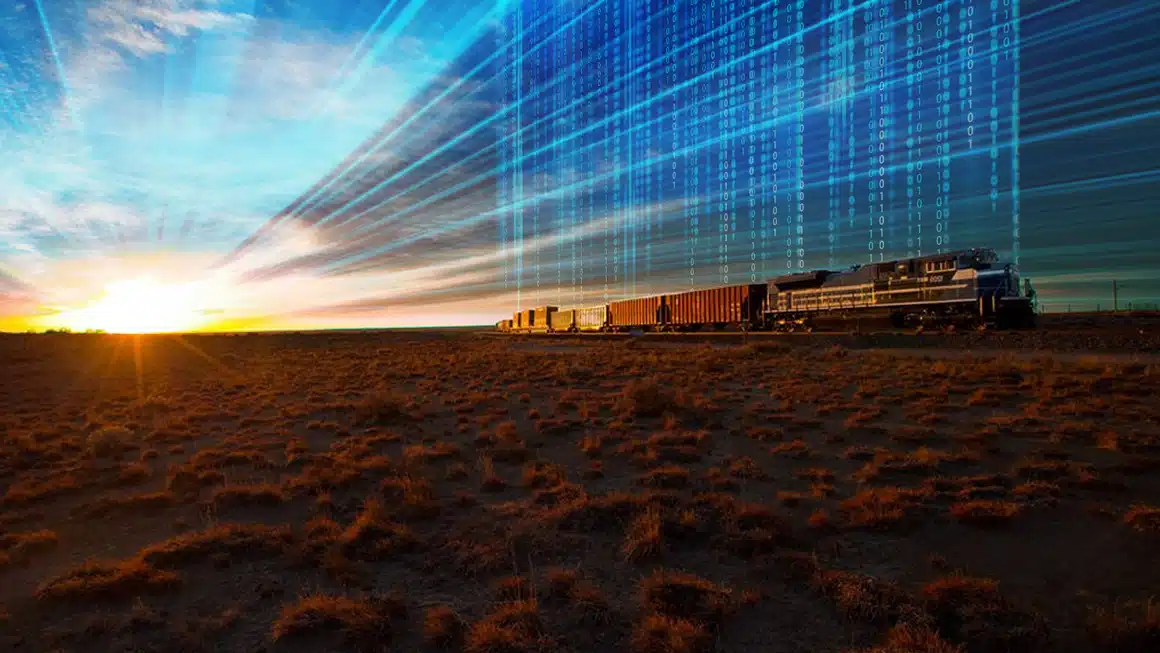America benefits as technology delivers a safer, more efficient rail network. As the freight rail industry continues to invest and transform into a 21st-century transportation leader, our focus is, as ever, on the customers and communities we serve. America needs solutions that keep U.S. businesses competitive in today’s rapidly changing world, prioritize the safety of workers and communities and reduce the environmental impact on the planet.
America’s freight railroads are an integral part of that solution. Our transformation, enabled by cutting-edge technology combined with a pro-innovation regulatory framework, will ensure America has the safe, sustainable and cost-effective freight network it needs to meet the challenges of tomorrow.
Building the future now.

Teams of railroad data scientists around the country are studying how to run a safer, more efficient network. At the heart of this effort are petabytes of data that contain the keys to unlocking the next era of freight rail innovation. Today, we are just starting to reach the volume of data and analytical capabilities needed to uncover vital insights that will inform nearly every aspect of railroad operations. Railroads have been testing automated rail track inspection technology, which is integrated directly into rail cars to inspect tracks as the train is in motion.
Before this technology arrived, track inspections were time and labor-intensive. The technology used in these automated inspections can detect tiny defects invisible to the human eye while enabling railroads to inspect up to eight times as much track each day. The new approach shows efficiency doesn’t compromise safety. The number of train accidents attributed to broken rail dropped 27% between May 2019 and May 2020, in large part due to continuous rail inspection technology, according to the Federal Railroad Administration.
Our customers will also reap the rewards of this technology: A safer network is a more reliable network. Previous regulations required test vehicles to frequently stop and perform manual inspections, forcing nearby trains — both freight and passenger — to slow down, leading to delays. Conducting inspections with technology integrated into trains will prevent such interruptions and create a more fluid, consistent system.
The benefits of continuous rail inspections extend beyond the immediate improvements to safety and will lead to better overall network operations. The huge volume of data collected is analyzed by sophisticated computer programs capable of identifying patterns in the wear and tear of rail. Today, freight rail companies are using this data to forecast when tracks need maintenance and schedule it for the optimal time, ensuring the network remains safe while further reducing service disruptions related to maintenance.
Gathering more and more data.

In the coming years, as more technology capable of collecting greater volumes of data is deployed on locomotives, rail cars and wheels, as well as alongside track, railroads will be able to build better, more accurate models for every part of their network — from traffic control in the largest rail yards to the smallest bearing in a rail wheel. For U.S. businesses, large and small, a safe, responsive and efficient rail network provides both peace of mind and a competitive edge in a crowded global market.
For instance, one of the nation’s largest railroads developed a model to predict 60 days out when a locomotive would require service. The two-month notice period gave the railroad adequate time to perform necessary repairs before network safety and productivity were affected. Another railroad uses data analytics to analyze rail car use patterns and predict the types of cars that customers will need and when they’ll need them. Using that information, the railroad can ensure the right car is in the right place at the right time, avoid issues like backlogs and reduce customer wait times.
Some railroads are implementing new dispatching software that analyzes real-time inputs, including crew schedules, maintenance plans and traffic patterns, to constantly optimize routes for individual rail cars, similar to how GPS apps use real-time conditions to route drivers. These improvements will help railroads provide the affordable service American businesses depend on with even greater efficiency and consistency.
Right now, we’re only scratching the surface of what’s possible. In the future, this data will help railroads achieve impressive cumulative benefits — including expanded network capacity and further progress toward our goal of zero accidents. And as railroads continue to optimize, more and more freight will migrate to the nation’s rails, further benefiting safety and the environment. Every improvement serves the greater good.
Hinging on pro-innovation regulation.

Underlying this future is smart, 21st-century regulation. Continued smart regulation will be the lynchpin to additional safety and efficiency gains in the years ahead. We’ve seen with other industries how innovation can open new doors for growth, improvement and efficiency. This is important for customers and for American competitiveness. Railroads need the confidence that innovation will be rewarded and encouraged, not stifled, across all modes. That’s the only way we can continue to develop and deploy the next generation of technology.
For policymakers looking to help our nation rebound after a historically challenging year, a pragmatic approach to regulations that recognize the power and promise of rail technology would have a wide-reaching impact. After all, when America can rely on the consistent and steadfast nature of freight rail, our customers — U.S. industries ranging from agriculture and automotive to construction and energy — can succeed, too. Together, we can help to drive our nation toward a better day.
